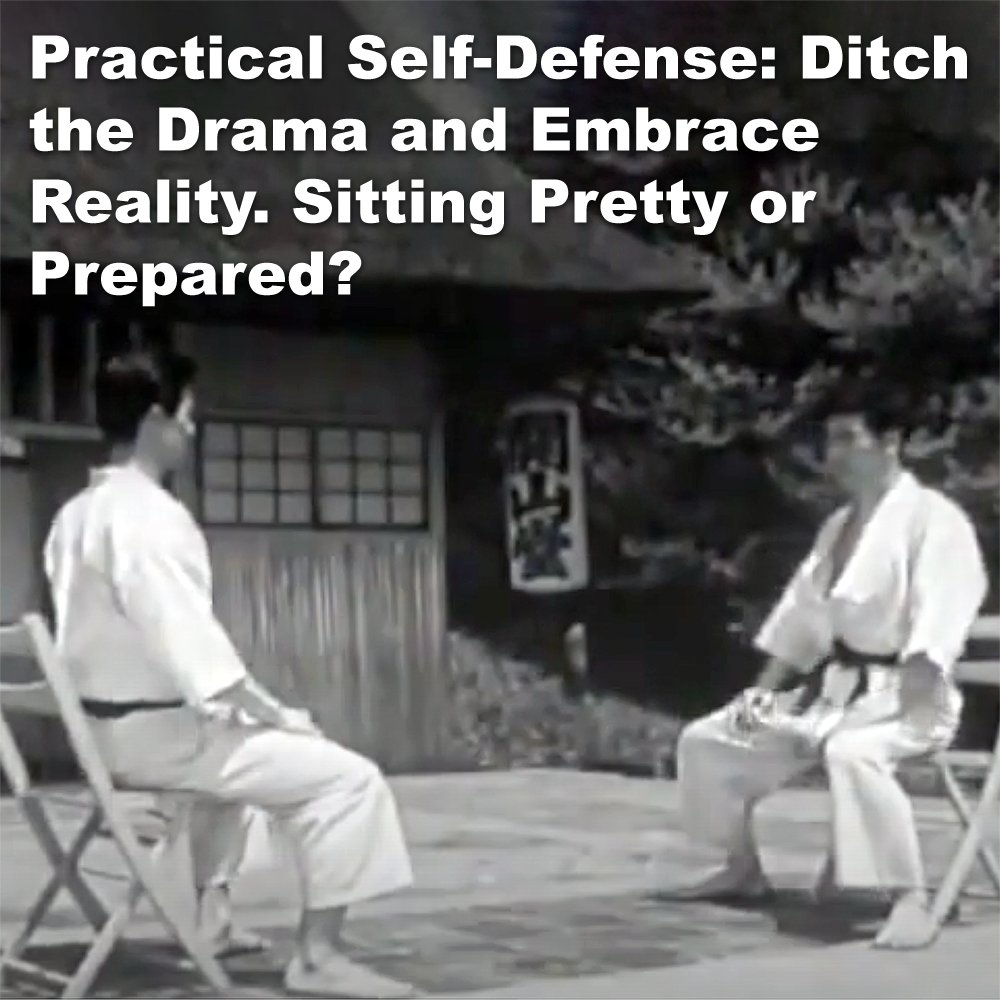
(Approx 2 minute 10 second read)
It’s astonishing to me that I need to clarify this further, something as straightforward as practical self-defense, yet here we are. Once again, the armchair enthusiasts seem unable to grasp the situation with any common sense.
.
To set the record straight: regarding the article where I was asked to sit in on a ‘nidan’ test, where the candidate voluntarily dropped to his knees when asked to perform a self-defense technique – the choice to drop to his knees was entirely his own, not a prompt from his instructor overseeing the test.
.
Here’s the actual instruction: “I want you to demonstrate a self-defense technique.” That’s it. No mention of a specific scenario, such as being on the ground, seated at a picnic, in a park, on a train, in a restaurant, or kneeling in any other context.
.
While traditional techniques like iai, idori, and suwariwaza exist for defending from seated or kneeling positions, they serve specific purposes in training contexts – but this wasn’t one of those cases. He was simply asked to demonstrate a self-defense technique.
.
After his grading examination, I asked him why he did this. He said he wanted to showcase a particular throw, focusing on demonstrating a specific technique. He chose a throw from judo rather than addressing the realism and practicality that self-defense requires, admitting there was no reason to adopt such a position.
.
In my opinion, it was impractical and left him in a highly vulnerable state – something that goes against the core principles of self-defense.
.
For those arguing that it could be a likely scenario – really? Let’s be realistic.
.
For those who advocate ground techniques: Yes, you may end up on the ground – my dojo and other pragmatic instructors such as myself teach ground techniques – but from our point of view, it’s imperative to try to regain a standing position. We don’t want a wrestling match. For self-defense, escape is our priority. Come on, please – it’s just common sense. Do I really have to spoon-feed people with this?
.
Self-defense is about addressing immediate threats effectively, staying balanced, mobile, and responsive. Dropping to your knees without prompting or necessity, only limits mobility, exposes vulnerabilities, and rarely reflects real-world need. Furthermore, waiting for an attack from behind presumes control in situations where unpredictability is the norm, potentially misleading students about realistic response priorities.
.
In short, this type of display may serve well in technical training drills to explore body mechanics or to teach a particular throw, but it’s not a pragmatic approach for self-defense, where situational adaptability and readiness are essential. This awareness needed to be displayed by the candidate for the grading.
.
To be clear: self-defense is about fast, effective action to neutralize immediate threats, which may or may not be physical. When realism is sacrificed for demonstration, it undermines the core purpose of self-defense training.
.
Yes of course, training from varied positions has its value, especially in situations where you are forced into a compromised state. But dropping to your knees when it’s neither necessary nor practical isn’t something anyone should realistically consider.
.
Self-defense is about staying in reality, not theatrics. Let’s stick with common sense.
.
Written by Adam Carter – Shuri Dojo.
